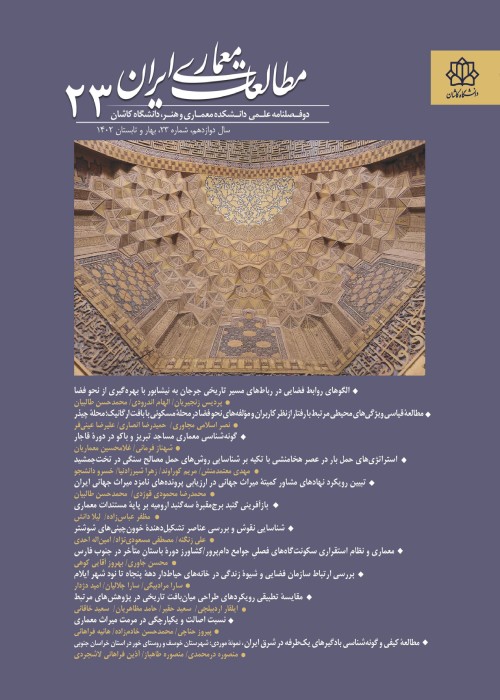The Oral and the Written in Architecture Education of the Islamic Era: Hypotheses about the Transmission of Architectural Knowledge
Author(s):
Article Type:
Research/Original Article (دارای رتبه معتبر)
Abstract:
Research on the relationship between science and architecture in the Islamic era has made significant progress in Iran in the last decade. This progress has simultaneously created new questions, such as about the transmission of science to the field of architecture, which itself requires questioning the nature of architecture education in the past— a relatively neglected subject because of two presuppositions. The first presupposition is the illiteracy of the architects of the past and the second presupposition is the oral way of teaching architecture in the past. The result of such thinking, which is mainly derived from comparing Iranian architecture during the Islamic era with the architecture of medieval Europe, is that architectural education in Iran after Islam was oral and was carried out face-to-face in construction workshops and there was no written or school education involved. In the present article, a new hypothesis about architecture education in this era is proposed by reviewing the two aforementioned presuppositions. For this purpose, through two introductions, the matter of “kuttab” or “maktab” education as a type of elementary school and pre-vocational instruction in the Islamic world will be discussed first, and an attempt will be made to provide a clearer picture of the level of literacy or illiteracy of professionals in the Islamic era. Then, using Gregor Schoeler's theory in the field of education in the Islamic era, the two “oral and written” modes of education are discussed, and next, the role of each in the Islamic education model especially of crafts is explained. Finally, by using these two introductions and some historical evidence, a new hypothesis is presented about the transmission of architectural knowledge. Based on this hypothesis, the architectural education model, contrary to the existing model, includes school education and the transmission of practical skills. According to this model, the builders of the Islamic era were minimally literate, in general, through elementary school education which made them able to read and write and understand the basic principles of geometry and mathematics. Therefore, this education model had two main and complementary pillars. One pillar included the technical skills teachings that were usually taught in workshop environments in practice and were mainly oral processes; the other pillar, however, included the theoretical teachings and scientific materials which were taught in a school environment and by the usual methods of school teachings, i.e., sama‘ (audition), qira’a (recitation) and imla’ (dictation). Thus, architecture education combined both "oral and written" modes.
Keywords:
Language:
Persian
Published:
Journal of Iranian Architecture Studies, Volume:11 Issue: 21, 2022
Pages:
53 to 68
https://magiran.com/p2527414
دانلود و مطالعه متن این مقاله با یکی از روشهای زیر امکان پذیر است:
اشتراک شخصی
با عضویت و پرداخت آنلاین حق اشتراک یکساله به مبلغ 1,390,000ريال میتوانید 70 عنوان مطلب دانلود کنید!
اشتراک سازمانی
به کتابخانه دانشگاه یا محل کار خود پیشنهاد کنید تا اشتراک سازمانی این پایگاه را برای دسترسی نامحدود همه کاربران به متن مطالب تهیه نمایند!
توجه!
- حق عضویت دریافتی صرف حمایت از نشریات عضو و نگهداری، تکمیل و توسعه مگیران میشود.
- پرداخت حق اشتراک و دانلود مقالات اجازه بازنشر آن در سایر رسانههای چاپی و دیجیتال را به کاربر نمیدهد.
In order to view content subscription is required
Personal subscription
Subscribe magiran.com for 70 € euros via PayPal and download 70 articles during a year.
Organization subscription
Please contact us to subscribe your university or library for unlimited access!



